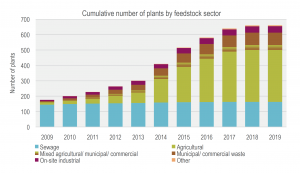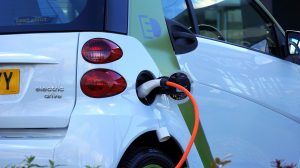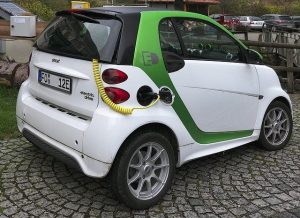Sucking out the carbon from the atmosphere- can negative emissions technologies help reach climate goals?
A blog post from Dr Jasmin Cooper, Research Associate at the Department of Chemical Engineering and Sustainable Gas Institute.
The atmospheric concentration of carbon dioxide is continuing to rise despite global efforts to decarbonise energy systems and economies. There was a dip in emissions during periods of national lockdown in the 2020 COVID-19 pandemic but as lockdown measures ease, emissions are returning to pre-pandemic levels (Met Office, 2021). It has become evident that the rate of decarbonisation is not matching the pace needed to meet the climate change goals set in the Paris Agreement and therefore cutting fossil fuels alone is not enough to keep global warming to below 2°C or 1.5°C (McGrath, 2020). Therefore, negative emission technologies (NET), such as those which ‘suck’ carbon dioxide out of the atmosphere, have an important role to play in meeting emission targets.
What are NET?
There are a number of emerging NET being used or are emerging, including afforestation and reforestation, direct air capture and bioenergy with carbon capture, some of which are on display in the Science Museum’s Our Future Planet exhibition. These are different to carbon capture for a coal power plant as they remove pre-existing carbon dioxide from the atmosphere, therefore reducing the atmospheric concentration.
Each NET has its pros and cons; afforestation is simple yet effective but requires large numbers of trees (and therefore land) to be planted in order for significant carbon removal. Bioenergy with carbon capture is multifunctional as it generates heat, electricity or liquid fuels, but the feedstock requirements could conflict with other agricultural needs.
Our work on the environmental impacts of NET
At the Sustainable Gas Institute, we have been examining the environmental impacts of NET. Important factors of all NET are their embodied emissions (emissions from the production of materials and energy used by a NET) and life cycle impacts (impacts from all activities, materials and energy consumed by a NET over its entire lifespan). If these are high, then the overall climate change mitigation effectiveness of a NET could be severely reduced. For example, if a NET emits 400 kg CO2eq. per one ton of carbon dioxide removed from the atmosphere, then the total amount of carbon dioxide removed is 600 kg. Emissions occur in the materials and energy supply chains, as well as during activities in the life cycle such as maintenance, construction and waste management. Emissions are not limited to greenhouse gases.
Other chemicals are released into the atmosphere that can have negative impacts to air quality, land and water. No NET is emission free, and the magnitude of emissions ranges greatly both between and within NET, depending on the quantity of materials and energy used and the level of decarbonisation within the materials and energy supply chains. Therefore, it is important that these emissions are taken into consideration when developing NET strategies.
Rate of carbon dioxide removal
 Another important factor to consider is the amount of carbon dioxide removed over time. Afforestation and reforestation and enhanced weathering can remove large quantities of carbon dioxide from the atmosphere, but the rate of removal is slow and dependant on factors such as temperature. Direct air capture and bioenergy with carbon capture, on the other hand, can remove large quantities of carbon dioxide from the atmosphere quickly, with capacities of one to four megatons of carbon dioxide per year per facility. However, they are the most sensitive to emissions from their supply chains. Hence, forward planning is an important factor that should be taken into account when devising NET strategies so that variations in rate of carbon dioxide removal are taken into account.
Another important factor to consider is the amount of carbon dioxide removed over time. Afforestation and reforestation and enhanced weathering can remove large quantities of carbon dioxide from the atmosphere, but the rate of removal is slow and dependant on factors such as temperature. Direct air capture and bioenergy with carbon capture, on the other hand, can remove large quantities of carbon dioxide from the atmosphere quickly, with capacities of one to four megatons of carbon dioxide per year per facility. However, they are the most sensitive to emissions from their supply chains. Hence, forward planning is an important factor that should be taken into account when devising NET strategies so that variations in rate of carbon dioxide removal are taken into account.
Weighing up the evidence
Overall, NETs do result in a net removal of carbon dioxide across their life cycle but under particular circumstances, the impact of embodied emissions can be so great that there is limited net carbon removal. Therefore, we need to maximise the effectiveness of NET as this is crucial for ensuring no repercussion are experienced from expanding their uptake globally and that there are no further delays to reaching Paris Agreement targets.
References
McGrath, M. 2020. ‘Not enough’ climate ambition shown by leaders. BBC News, 12 December 2020.
Met Office. 2021. Mauna Loa carbon dioxide forecast for 2021 [Online]. London, UK. Available: https://www.metoffice.gov.uk/research/climate/seasonal-to-decadal/long-range/forecasts/co2-forecast [Accessed June 2021 2021].


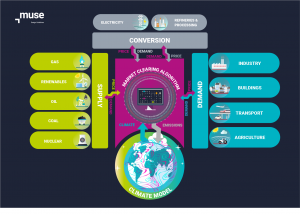

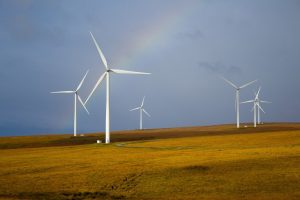
 Sustaianable Gas Institute.
Sustaianable Gas Institute. 
